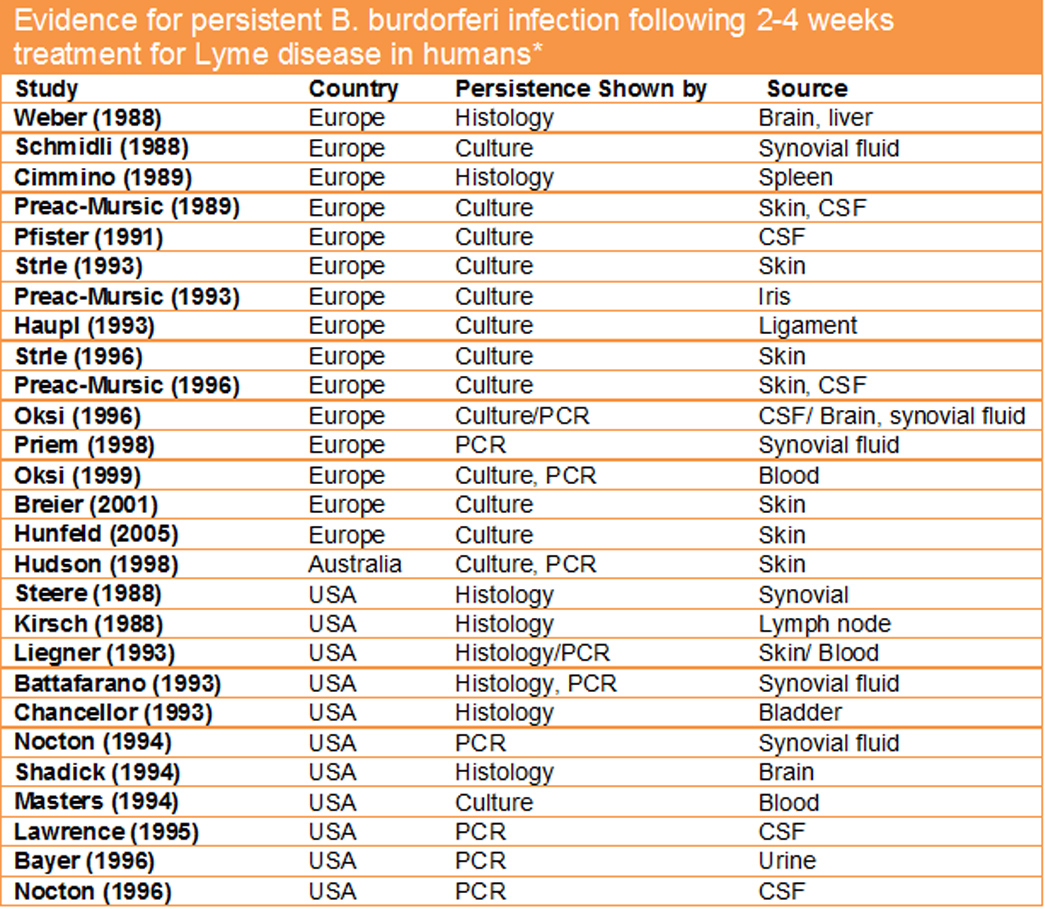By relying only on these flawed tests, doctors may believe the patient has been cured. However, this is not always the case. Researchers conducting extensive tissue biopsies of animals, a technique too invasive for clinical practice, have demonstrated disease persistence.
As the chart below shows, persistence of the bacteria in humans after only short-term treatment has also been shown through tissue biopsies of the brain, liver, spleen, skin, eye, bladder, and lymph nodes in numerous published studies.
 It’s time to lay to bed the notion that persistence has not been demonstrated in humans. It has–as evidenced by these 27 case studies. Many of these studies used biopsies of brain, bladder, synovial fluid, liver, lymph node, central spinal fluid, spleen or iris. Clearly, this type of invasive tissue sampling is not performed on humans unless it is ancillary to some other essential medical intervention. The remaining studies used tests that are not in commercial use.
It’s time to lay to bed the notion that persistence has not been demonstrated in humans. It has–as evidenced by these 27 case studies. Many of these studies used biopsies of brain, bladder, synovial fluid, liver, lymph node, central spinal fluid, spleen or iris. Clearly, this type of invasive tissue sampling is not performed on humans unless it is ancillary to some other essential medical intervention. The remaining studies used tests that are not in commercial use.
The fact that we have demonstrated persistence in some many cases despite these limitations is significant. The problem with demonstrating persistence on a regular basis is the poor state of testing in Lyme disease. We need a commercially available test that is non-invasive to establish persistence on a regular basis to monitor the effects of on-going treatment.
The chart above is adapted from Stricker R, Johnson L. Lyme disease: The next decade. IDR. 2011; http://www.dovepress.com/articles.php?article_id=6013 .
The LYME POLICY WONK blog is written by Lorraine Johnson, JD, MBA, who is the Chief Executive Officer of LymeDisease.org, formerly CALDA. Contact her at lbjohnson@lymedisease.org. On Twitter, follow me @lymepolicywonk.
The post LYMEPOLICYWONK: Persistence Personified in Lyme Disease–Those Pesky Human Cases appeared first on LymeDisease.org.